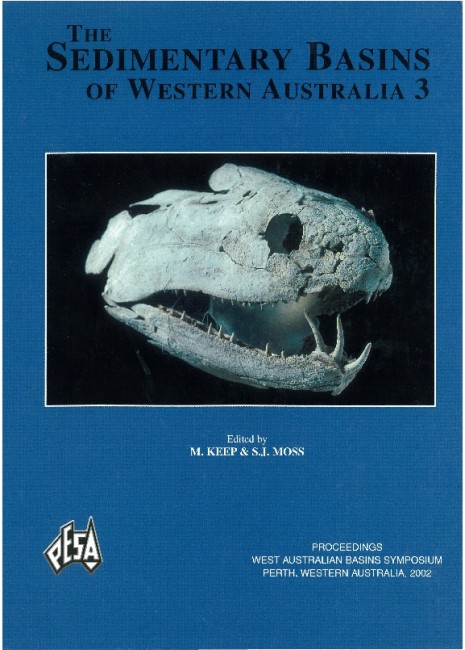Publication Name: The Sedimentary Basins of WA
Authors: I.M. Longley, C. Buessenschuett, L. Clydsdale, C.J. Cubitt, R.C. Davis, M.K. Johnson, N.M. Marshall, A.P. Murray, R. Somerville, T.B. Spry & N.B. Thompson
Publication Volume: 3
Date Published: December 2002
Number of Pages: 81
Reference Type: Book Section
Abstract:
The North West Shelf of Australia is a world class gas province with minor oily sweet spots. It is a marginal rift with pre-rift Permo~ Triassic intracratonic sediments, overlain by Jurassic to Cainozoic syn- and post-riftsuccessions. These were deposited in response to rifting and seafloor spreading of at least three continental blocks in Oxfordian, Tithonian and Valanginian times. Rifting was initiated in the central Argo area in the Oxfordian. In Tithonian times, the rifting jumped to the north of Timor (where the spreading record has been subsequendy subducted), then in the Valanginian it moved to the southern Cuvier area. This break-up history produced a complex spatial and temporal distribution of rift and post rift deposits, which strongly control the efficiency and liquid hydrocarbon potential of the margin's petroleum systems.
Since exploration drilling commenced in 1953, some 754 exploration wells have been drilled (at Dec 2001),
discovering estimated reserves of 2.6 billion bbls of oil, 2.6 billion bbls of condensate and 152 Tcf of gas within 233 hydrocarbon fields. Most of the successful traps comprise sands within rift-related horsts and tilt blocks, or sands within overlying drape structures. Almost all (97%) of the margin's resources are reservoired beneath the (dominandy Cretaceous) regional seal. Other more complex traps have been rarely successful, in general the margin offers litde encouragement for stratigraphic entrapment due to the sandy section beneath (and above) the regional seal.
The dominance of gas (84% by hoe) is due to the quality, and often the high maturity, of the source rocks within all identified hydrocarbon systems. Rare oil-prone source rocks are present, but their effectiveness in producing economic oil-fields relies on protection from gas flushing, and/or biodegradation or the selective loss or separation of the dominant gas charge via fault leakage or water washing. Effective oil source rocks are found locally within mainly Jurassic pre- and syn-rift deltaic, or syn-rift marine settings, within partially restricted depositional settings, whereas sediments deposited in open marine environments are typically lean and gas-prone.
The extensive coverage of 3D seismic acquired in the late 1990s over the 'oily' portions of the margin has not
resulted in large exploration successes. This is due to the simple effective traps at base regional seal level being
beneath the amplitude floor and had been previously identified with 2D data. Small traps were identified by 3D in these areas, and these discoveries will be developed as infrastructure matures, and economic thresholds
decrease.
Some 119 Tcf of gas reserves remain undeveloped, together with an estimated 1400 mmbbls of potential condensate reserves. The future of the North West Shelf hydrocarbon province largely lies in developing these
resources and exploring for traps surrounding the future infrastructure. The province is still under-explored by
global standards, especially outside of proven oily areas, where large potential volumes remain in untested
deepwater Mesozoic basins, and inboard poorly explored Palaeozoic basins.
The North West Shelf of Australia provided the initial growth platform for Woodside, and Woodside will continue to be committed to further significant exploration in the province. With vast discovered, but undeveloped, gas reserves, Woodside is focussed on developing existing gas reserves, whilst continuing exploration for oil. However, the low probability of discovering a new oily sub-basin, simple trap geometries, gassy charge and the poor record of 3D seismic in proven oily areas, creates a challenge to compete for exploration funds for oil exploration on the North West Shelf when compared against global oil opportunities.


